After reading a great book called “Chemical Free Kids” by Allan Magaziner, Linda Bonvie and Anthony Zolezzi, I came to learn how many toxins and chemicals are in our food and the subsequent negative impact on our children as a result of being exposed to them.
I’ve seen first hand, the rising incidence of learning difficulties, food intolerances, ADHD, Autism, reflux, tummy upsets, asthma, bloating and allergies, and therefore feel compelled to help parents better understand the dangers of food additives and preservatives, including which foods to avoid.
What are food additives?
Food additives are chemicals added to foods to keep them fresh or to enhance their colour, flavour or texture. They may include food colourings, thickeners, artificial sweeteners, emulsifiers, flavour enhancers (such as MSG) or a range of preservatives to help prolong shelf life.
What’s the difference between food additives and preservatives?
Preservatives are a type of food additive. They are added to foods to stop spoilage, preserve their appearance and ultimately increase shelf life.
What’s the problem with food additives?
Children have different nutritional needs to adults. They are growing and developing and are more sensitive to poisonous residues in foods, which accumulate in their body faster than adults. More importantly their immune systems and brains are not fully developed and are more susceptible to the chemical additives in certain foods.
What your child eats for breakfast, lunch, dinner or at snack time, can directly affect whether they may be an asthmatic or not, a hyperactive vs. focused child, or have a calm disposition vs. being more prone to fly off the handle.
While development of the immune system, reproductive system and nervous system begins during pregnancy, it continues into adolescence and late adulthood, and toxins or a lack of nutrients can impede it. Similarly it’s just as important for a breastfeeding mother to be mindful of her food choices.
Foods to Avoid or Keep to a Minimum
It can be incredibly hard to make the right food choices, as even the seemingly “good” foods can be riddled with food additives.
Low Fat or “Diet”
A good example of this is products labelled “low fat” or “diet”. The benefit of the reduced fat content is generally outweighed by the negative impact of the increased sugar content and high level of processing that these products are subjected to.
Refined Sugar
Along the same vein – fruit juices, sugar-sweetened beverages, confectionary and even dried fruit are packed with refined sugar. The refining process strips out the natural minerals found in sugar cane (natural sugar), leaving only refined carbohydrates. Not only is refined sugar incredibly difficult to digest it is also toxic to the body and plays a major role in everything from tooth decay to obesity, diabetes, cancer and heart disease.
Artificial Trans Fats
Naturally occurring trans fats are found in small amounts in dairy products and red meat. Consuming moderate amounts of dairy and lean red meat is generally encouraged as these foods contain essential vitamins and minerals including iron, calcium and protein.
Artificial trans fats on the other hand, are manufactured by adding hydrogen to liquid vegetable oils to make them more solid. Trans fats are found in foods that use hydrogenated or partially hydrogenated vegetable fats, such as deep-fried and baked foods, including doughnuts, cakes, pastries, pie crusts, biscuits, and crackers.
A diet high in trans fats increases your risk of developing heart disease and stroke. It’s also associated with a higher risk of developing type-2 diabetes.
Artificial Sweeteners
Contrary to popular belief, artificial sweeteners are not necessarily “good” for you. According to a recent study, artificial sweeteners increase the risk for health problems to an extent similar to that of sugar and may also exacerbate the negative effects of sugar.
And finally;
If the ingredients list is long (more than four or five ingredients) or there is an ingredient listed that you can’t pronounce, there’s a good chance it’s no good for you!
Foods to Include in Your Family’s Diet
Whole real, fresh food is best. In other words, steer clear of processed (e.g. canned, frozen, dried) foods wherever possible or at least keep them to a minimum. Foods that are highly processed are generally low in nutrients and high in additives. Try to eat lots of fresh, in season fruit and vegetables, wholegrain breads, nuts, seeds, beans and cereals and a moderate amount of dairy, lean red meat, chicken and fish.
About the Author:
Dr Andrea is a bubbly and energetic Family Chiropractor and mama, working primarily with mothers and babies. Andrea has a great passion for helping women conceive, experience their optimal pregnancy and birth, and then raise healthy happy children. Andrea has also trained as a Doula and runs workshops for midwives at leading maternity hospitals, as well as brain development classes through Maternal Health Centres.
Our Products
-
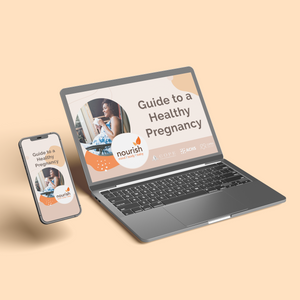
01. Guide to a Healthy Pregnancy
$55 -
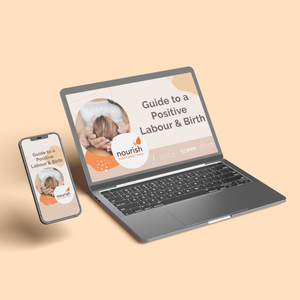
02. Positive Birthing Course
$55 -
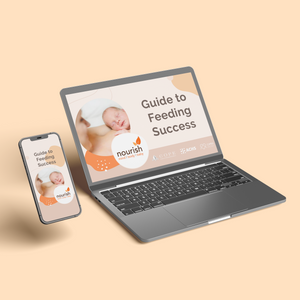
03. Infant Feeding Guide
$55 -
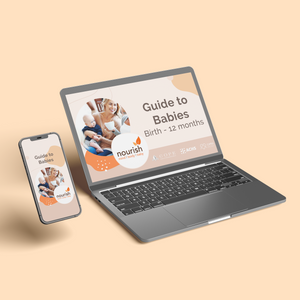
04. Baby Sleep Guide - First 12 Months
$55 -
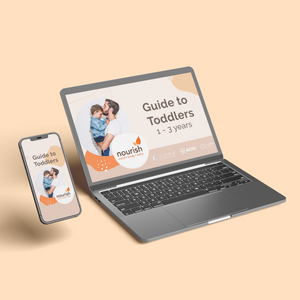
05. Toddler Parenting Course 1 - 3 Years
$55
-
 When to Start Antenatal Classes?
When to Start Antenatal Classes?
Becoming a parent is an incredible milestone, but it comes with a host of changes that can be daunting, especially for first time parents. Antenatal classes are all about offering expectant parents the education they need to make informed decisions, look after their bodies and care for their newborn babies. While you probably already have a long list of things you need to accomplish during your pregnancy, it’s a good idea to make time to attend antenatal classes.
-
 Development Milestones 4-8 Months
Development Milestones 4-8 Months
As they reach the middle of their first year, you'll start to see bigger leaps in their growth and ability!
In this article, we’re going to discuss your baby’s developmental milestones between 4-8 months, and what you can expect along the way.





 When to Start Antenatal Classes?
When to Start Antenatal Classes?
 Development Milestones 4-8 Months
Development Milestones 4-8 Months








